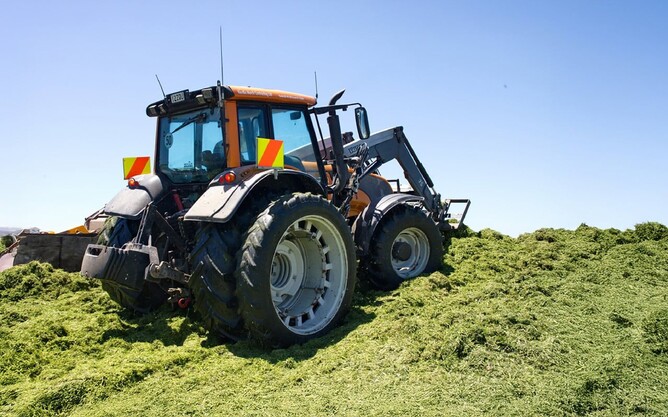When it comes to managing soil fertility on your property, a guiding principle states that you should put back the nutrients that you take away. Silage, baleage, and hay, which are either stored for use later in the season or sold off the farm, are part of the ‘take away’ side of this equation since the nutrients to grow these crops have been taken up from the soil.
Even if the silage and hay remains on the farm, it’s unlikely that it will be fed out onto the same paddocks from which it was harvested. So harvested paddocks can suffer reduced soil fertility if the removed nutrients are not replaced.
There is an even greater need for post-harvest nutrient replacement if the same paddocks are used to make second or third-cut silage or hay. The same applies for paddocks that are harvested every year such as those on sheep and beef farms where there may be no other paddocks flat enough.
One indication that the soil in harvested paddocks isn’t as fertile as it should be is the presence of weeds.
Weeds indicate low fertility
Weeds indicate low soil fertility because they are typically much better at growing in poorer soils than cultivated pasture plants like ryegrass.
In a freshly harvested paddock where the soil fertility has dropped, the pasture regrowth isn’t as fast as it should be. So the soil is left exposed, allowing weed seeds to quickly germinate and establish.
Weeds that you might find in these situations are ‘flat-leaf’ weeds such as dandelions (Taraxacum officinale) and broad-leaf plantain (Plantago major).
Applying a post-harvest dressing is sound practice to avoid such less productive, weedy pastures.
But which nutrients should you apply?
The nutrients to apply
The nutrients most needed are likely to be potassium/potash (K), phosphorus/phosphate (P), sulphur (S), and magnesium (Mg). A small amount of nitrogen (N) will also be beneficial to stimulate pasture regrowth and quickly cover bare soil.
Potash needed the most
Of the nutrients just listed, we can expect that K will be needed in the greatest quantity due to the relatively large amounts removed in the harvested pasture.
For example, although grass might only contain 1.5% K in June, by harvest time in October and November, the levels will have risen to 4.5%. The result is that for every tonne of silage or baleage harvested, around 40 to 50 kg of K have been removed from the soil. That’s a lot of potassium!
Interestingly, the plants don’t actually need all this K for optimum growth, and the excess they absorb is widely known as a ‘luxury uptake’. While luxury uptakes can occur with other nutrients, it’s a particular problem with K since the excesses absorbed create shortages for post-harvest regrowth or any following crop.
Luxury uptakes of K are also a problem because they suppress plant absorption of nutrients such as sodium and magnesium. This contributes to the metabolic problems we see in livestock such as ‘grass staggers’ in spring.
While the regrowth of ryegrass is affected by low K levels, clover suffers too. Unfortunately, although K is essential for strong clover growth, clover isn’t great at absorbing it. This trait is particularly unhelpful for post-harvest clover which needs to recover from being shaded by ryegrass for several weeks. So a shortage of available K in the soil at this time can compromise clover growth and reduce its nitrogen-fixing capacity.
Avoid weedy pasture
To avoid getting to the ‘weedy-pasture’ stage, apply a post-harvest dressing. Of course, the exact nutrients and quantities needed will depend on how heavy the crop was. As always, to be really sure that you are replacing what has been taken away, a soil and herbage test is sound practice.
This article was published in the Coast & Country News.







